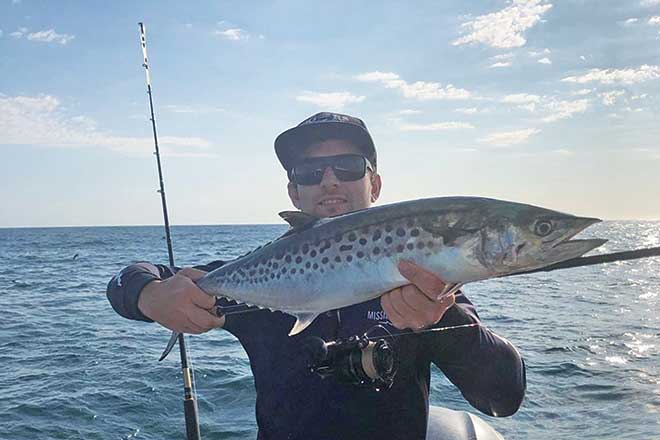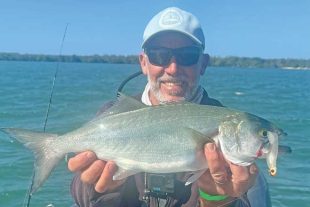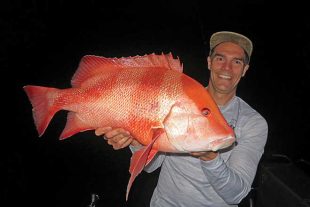Typically, by February a fever has kicked in on the close reefs, attracting frequent fishos and visitors to wet a line in a melting pot of excitement and frustration. mackerel
Yep, you guessed it… mackerel season!
With the mackerel run well and truly underway and the southern closures – south of Stanage Bay to the border – taking effect on February 1-21 and March 1-21, it’s a great time to be thinking about your approach to bagging a late-season spanish mackerel in prime condition, or switching tactics to find more spotted mackerel to fill the Esky on a hot summer day.
Let’s focus on the latter and imagine two scenarios… you’ve anchored up because you’re there early, with plenty of space to utilise and get a light berley trail happening or, the reef is packed and you’re drifting the same lines in rotation with the other five or so boats in your drift fishing for spotties.
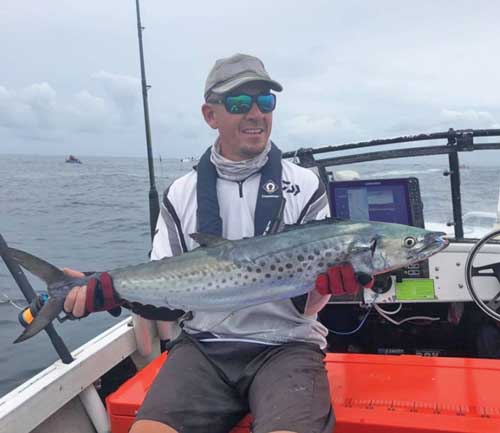
Scenario one – anchored
Anchoring before the edge of the reef and allowing yourself extra rope length can be a massive advantage, especially if there’s no side wind and you can sit in line with the current to get your bait deployed straight out the back of your transom.
Ball sinkers in size 00 are just enough to hang a bait sub-surface, away from any birds and deep enough to be in the scent trail of the heads that are being mashed up and gradually dropped at your feet.
Emphasis on mashed and not cubed, as the oils are far better dispersed through the water – throw in a couple of chunks here and there for extra visual and swap your bait out regularly to keep them releasing a scent.
A slow steady wind in creates a flickering flash that often draws a strike from spotted mackerel.
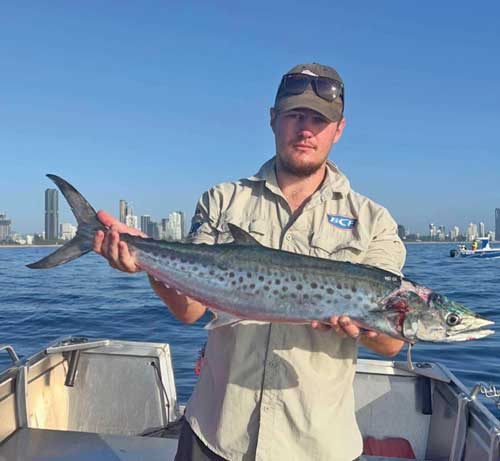
Angle-wise, I’d normally aim for a 30-degree angle of line from the rod tip in the holder to the water because the current will lift the bait once line is slowly let out.
Keeping in mind most of the ground isn’t deeper than 20m and you want your bait high for spotties, as they cruise about in schools favouring topwater bait-balling opportunities.
On that note, keep an eye out for bird activity diving and visuals of fish breaking the surface, mackerel won’t be far away, even if it turns out to be small tuna causing the disturbance.
A 20-30g small profile slug – such as Lazer Lures slugs – are generally the fastest way to find out, cast from a distance so as not to spook the fish.
With that said, never drive through a bait ball or be so close you drift through it.
Generally, use 20lb monofilament fished as simply as possible, with a 6” length of 20lb single strand and a single Mustad O’Shaughnessy or twin gang to present pillie tails that sit nicely in the current without sinking or jerking about on your standard snapper setup.
A softish tip and a smooth drag are paramount to the enjoyment of blistering runs at close quarters and also somewhat of an advantage when it comes to not pulling hooks on their soft mouths.
When it comes to this style of mackerel fishing, mono trumps braid here.
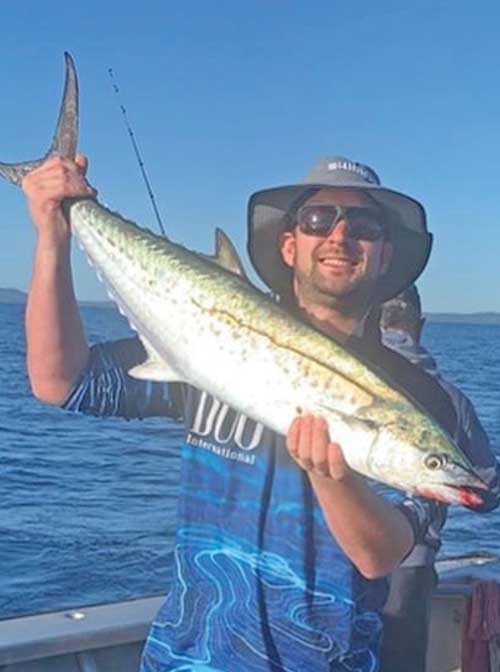
Scenario two – drifting
In essence, drifting and covering ground to find fish seems like the most productive fishing method, and I tend to agree, providing the conditions and space to allow for it.
In theory, the fish will circle a reef, so you’ll have the opportunity to drift with them and be a host boat to them, if you can get the berley right as soon as you see them on the sounder.
Obviously, if you fish solo, this doesn’t apply – unless you love a good tangle and possibly a few choice words from your neighbouring boats when a rogue mackerel causes chaos.
Top considerations when drifting are space, direction and exits.
So always consider starting a drift earlier than you have to, so your bait can be deployed and managed in a timely manner if need be.
A test drift is always recommended – to double check that the draft and size of your boat is going to create roughly the same lines as the boats on the lines beside you.
Possibly most importantly, respect the distance in front of you, so you can set bait in a nice spread of close and far, with enough space to react on a hook-up.
Chances are everyone is fishing forwardly and not planning on casting a slug behind them, but don’t discount the likelihood.
If I saw a string of hook-ups coming along the stretch of reef I was on, then I too would be tempted to flick a slug.
Remember when drifting to scale down on your lead.

Zero lead is required for drifting if you keep in touch with your bait, providing the current isn’t running too fast so that the bait are still rising to the surface.
If you find the drift is so slow that your bait are still sinking, think about a float set 2m above the hook and switch to a small ball sinker, so you know exactly where the bait is sitting if you need to adjust to suit feedback from the sounder.
Before this month wraps up, here are a couple of things to consider.
First things first, water temperatures of 24C and higher are ideal and fish blue water – avoid the green floods of the tidal that can flow south out the Seaway.
Don’t discount One Mile Reef for spotted mackerel – it’s mostly a bait-collecting reef or a tide change opportunity for jewfish, but trust me, it holds mackerel.
Mermaid Reef is always worth a stop and often produces better than average per boat, due to less pressure and a smaller concentration of ground.
Palm Beach Reef is by far the most popular ground and holds a wider variety of species too, including giant trevally, but definitely consider the pointers for drifting in scenario two.
Don’t hesitate to fish wide of the main reef and look on your plotter for rocks and features to prioritise.
And don’t be shy about using the charter boats as a guide – if they are on Palmy, then chances are they’ve tried the first two reefs without favourable results.
If all else fails, try Diamond Reef.
As always, tight lines and feel free to reach out on the Suncoast Skutes socials with your success and further queries.
 Bush 'n Beach Fishing Magazine Location reports & tips for fishing, boating, camping, kayaking, 4WDing in Queensland and Northern NSW
Bush 'n Beach Fishing Magazine Location reports & tips for fishing, boating, camping, kayaking, 4WDing in Queensland and Northern NSW

